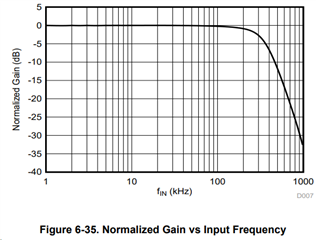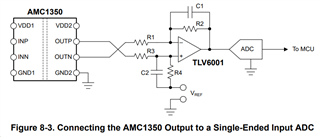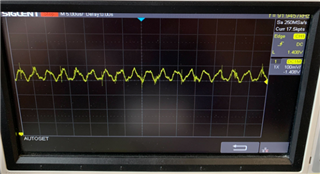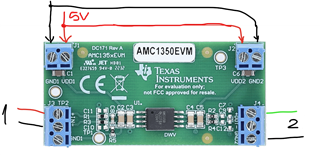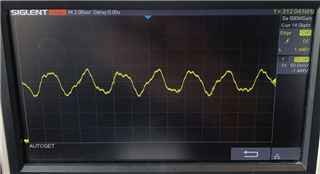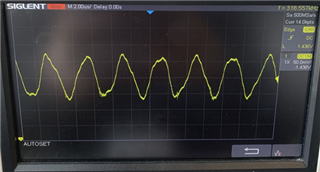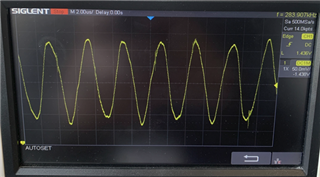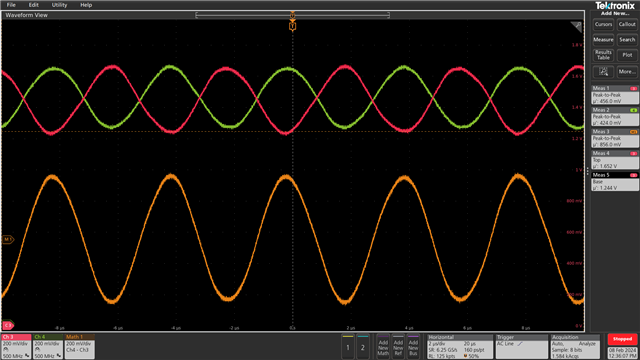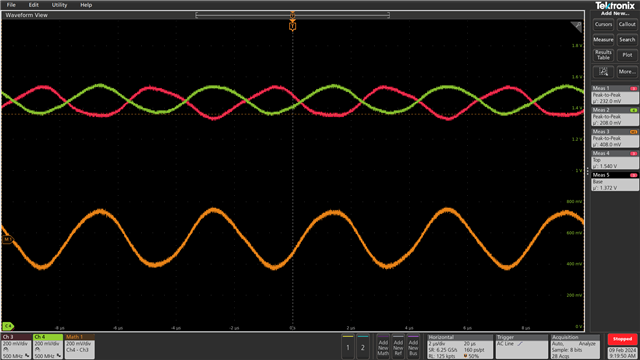Hi,
I'm looking for an isolation amplifier for a 2Vpp 250KHz signal which appears to be challenging to find. The closest I could find is the AMC1350 and I have the following questions:
1) The frequency of interest in my application is 250KHz and the BW of the AMC1350 is 275KHz up to 300KHz, will this be sufficient? I understand that AMC1350 introduces 0.4 attenuation which is not a problem to me. If not, are they any other more suited options?
2) Only a single-ended output from the opamp is needed, how to terminate the unused output?
Thanks!


